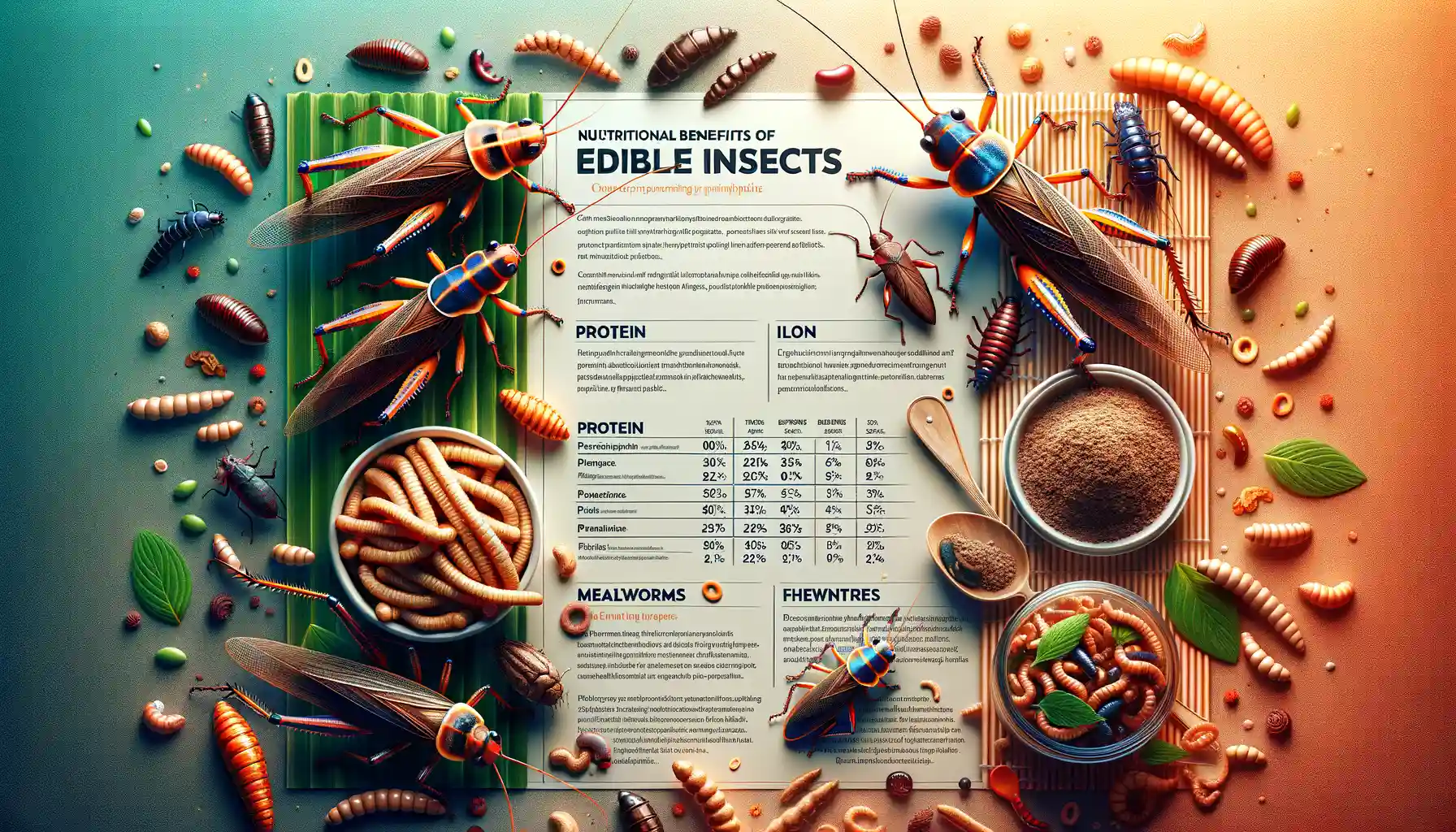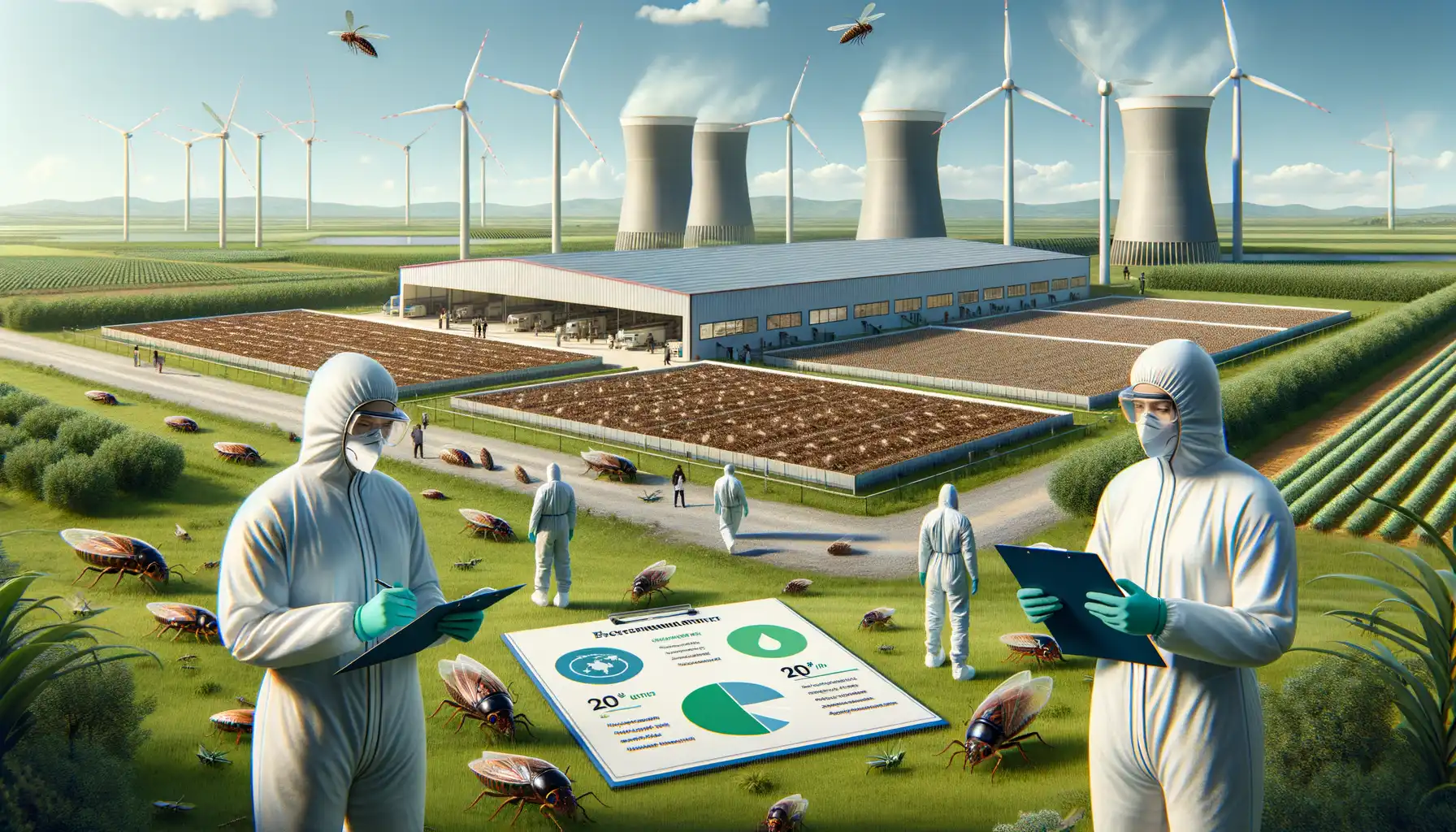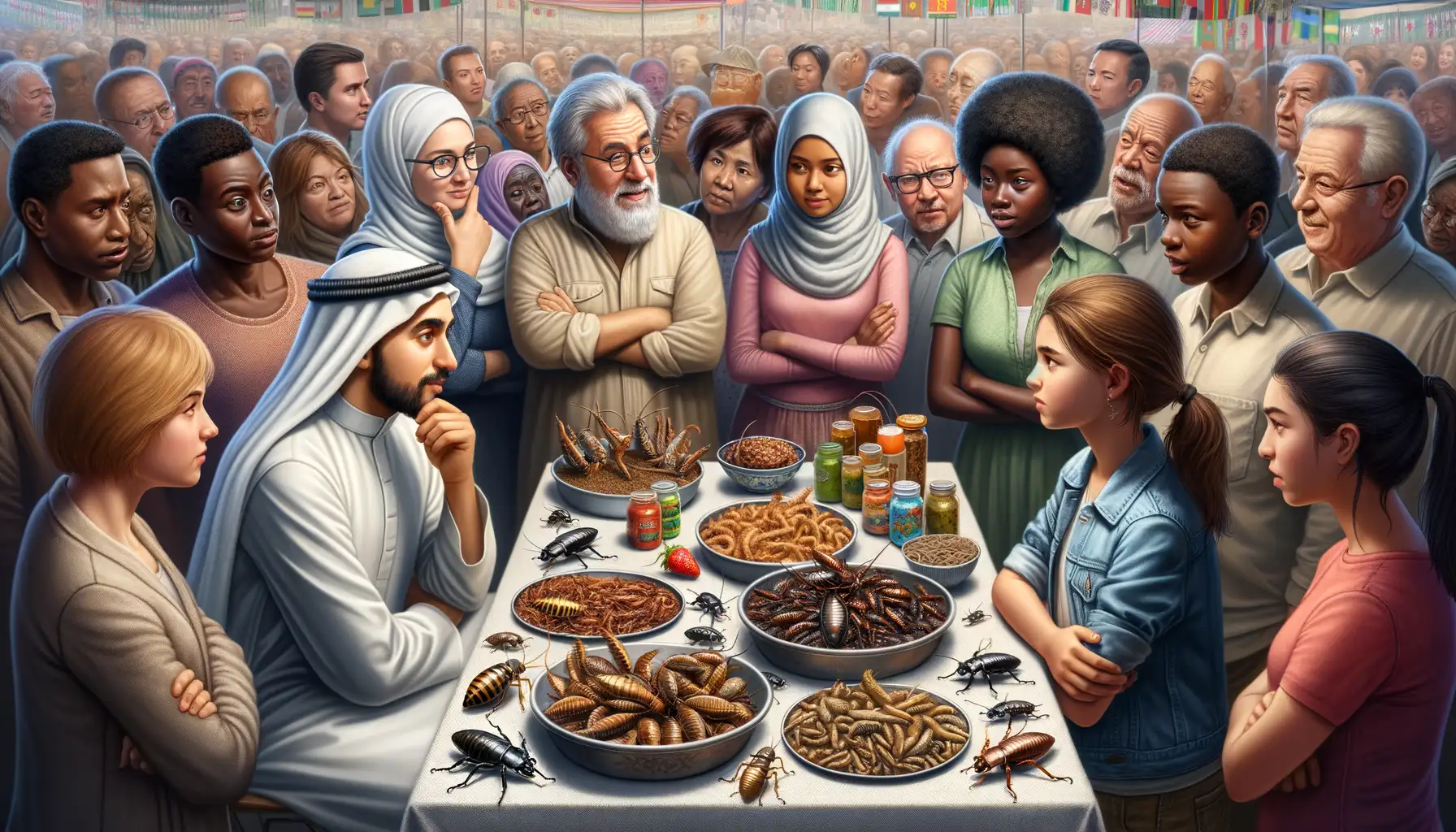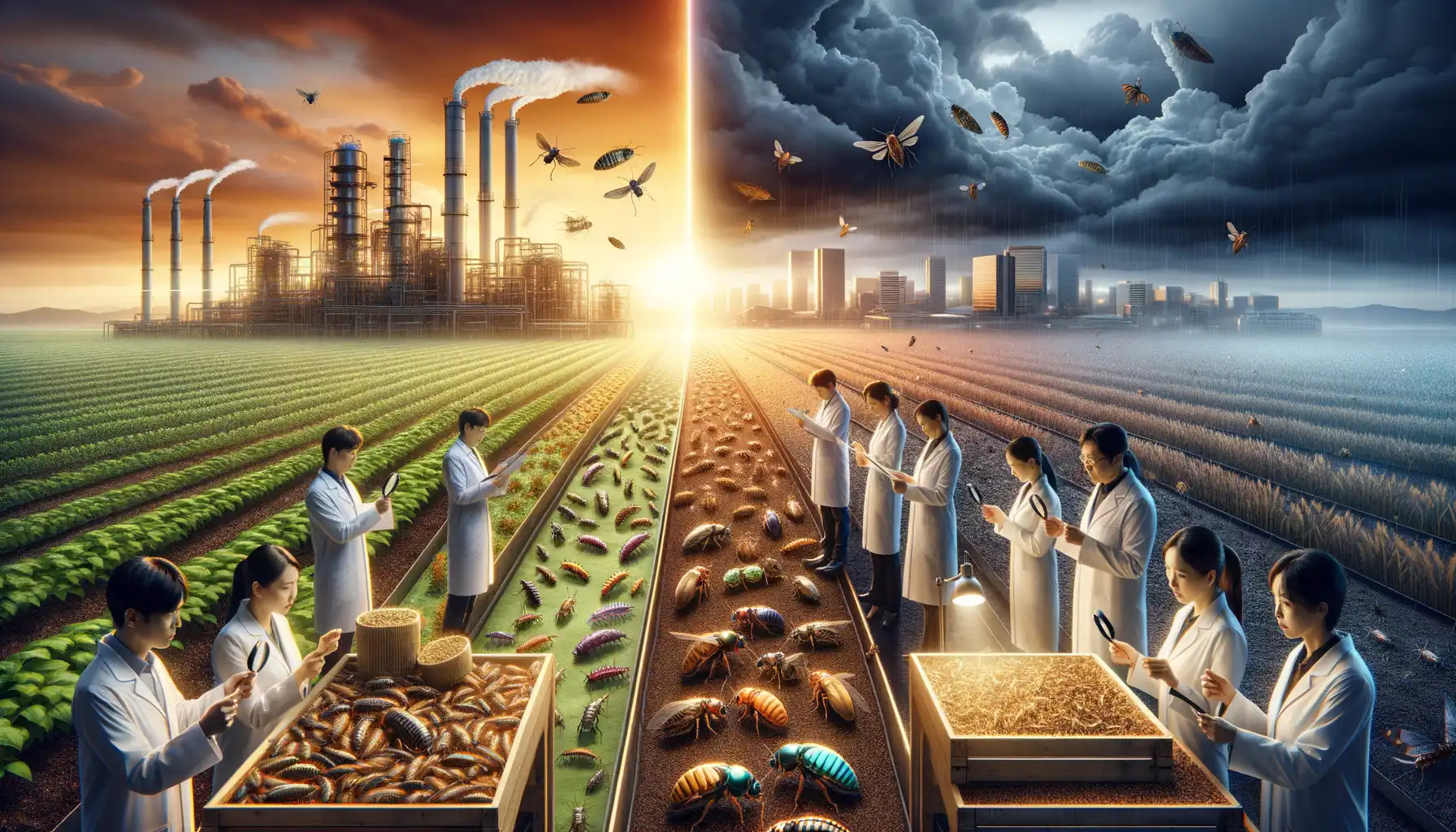Introduction to Edible Insects as a Sustainable Protein Source
Imagine biting into a crunchy snack or a perfectly seasoned protein-packed dish, only to discover that it’s made with — wait for it — edible insects. Surprised? Intrigued? You’re not alone. This isn’t some sci-fi concept; it’s a bold, delicious step toward tackling one of humanity’s greatest challenges: finding sustainable food sources for a growing population.
An Unexpected Ally in the Protein World
What if I told you the tiny critters crawling around in your garden could become culinary superheroes? Yes, crickets, mealworms, and grasshoppers are quietly making waves as an eco-friendly alternative to traditional livestock. And before you raise an eyebrow, consider this: these little creatures pack a serious nutritional punch, offering high-quality protein, essential amino acids, healthy fats, and even micronutrients like iron and zinc. That’s more than your average steak can brag about!
The “Why” Behind the Buzz
Why are edible insects turning heads globally? It’s simple—they’re better for the planet, better for you, and surprisingly versatile in the kitchen! Think cricket flour for baking guilt-free cookies or roasted grasshoppers spiced to perfection. Plus, their production requires a mere fraction of the land, water, and feed needed to raise cattle or sheep. Want an easy breakdown? Here’s why they’re earning their spot on future dinner plates:
- Eco-warriors: Insects emit far fewer greenhouse gases compared to cows or pigs.
- Efficient protein factories: They convert feed into protein faster and require little space.
- Waste-reducing champions: Many insect farms use organic food waste to grow these tiny creatures.
From sizzling cricket tacos to buttery mealworm cookies, edible insects are poised to rewrite the menu of tomorrow. Are you ready to take a bite out of the future?
Nutritional Benefits of Edible Insects

Why Insects Are a Nutrient Powerhouse
Imagine biting into something that’s not only delicious but also brimming with nutrients your body craves. That’s exactly what **edible insects** deliver! These tiny marvels might seem humble, but they’re bursting with an impressive array of nutritional benefits that can rival—or even outperform—traditional protein sources. Let’s break it down.
First and foremost, many edible insects like **crickets, mealworms**, and grasshoppers are packed with high-quality protein. We’re talking about a complete protein containing all nine essential amino acids your body needs to thrive. Say goodbye to the myth of needing a steak to build muscle because these little guys have your back—without the cholesterol overload.
But it doesn’t stop at protein. Edible insects are rich in vitamins like **B12 (an energy booster)**, minerals such as **iron and zinc**, and healthy fats like omega-3s. Plus, they’re low in carbs and calories, making them a guilt-free indulgence.
- A handful of dried crickets contains more calcium than milk and more iron than spinach.
- Grasshoppers? Packed with nearly as much protein as chicken breast… but with far less environmental guilt.
Let’s not forget the fiber! Yes, some insects come with chitin—a dietary fiber that supports digestion and gut health. Think of it as your stomach’s new best friend.
Would you ever guess that something so small could bring so much to the table? It’s time to rethink what “nutritious” really looks like!
Environmental Impact of Insect Farming

Why Insects Are Nature’s Eco-Friendly Superstars
Did you know that raising insects creates a fraction of the environmental footprint compared to traditional livestock farming? Picture this: producing 1 kilogram of beef emits a whopping 60 kilograms of carbon dioxide, while raising crickets for the same amount of protein generates less than 1 kilogram. That’s like swapping out a gas-guzzling SUV for an electric bike. Mind-blowing, right?
But it’s not just about emissions—there’s also the water. While a cow sips up thousands of liters to produce just a single burger, insects barely touch the faucet. And when it comes to land use, forget sprawling farms that stretch for miles. Small-scale insect farming can thrive in compact, urban-friendly settings, making it a win-win for our crowded planet.
- Lower greenhouse gas emissions: Crickets and mealworms are tiny but mighty when it comes to reducing climate impact.
- Water-sipping efficiency: Insects require far less water than cattle or pigs.
- Minimal land use: They can even be farmed vertically in warehouses!
An Unexpected Ally in Waste Reduction
Here’s a surprising twist: insects don’t just consume less—they eat what we waste. These critters can transform food scraps, agricultural byproducts, and organic waste into nutritious protein. Imagine black soldier fly larvae happily munching through mountains of discarded fruits and veggies that would otherwise rot in landfills. Instead of adding to methane emissions, they’re creating sustainable feed for humans and animals alike.
This natural recycling process makes insect farming a powerful ally in tackling food waste. It’s like Mother Nature’s own composting system on steroids. And the best part? The leftovers from insect farming (yes, even their frass—aka insect poop) can be used as a rich, organic fertilizer to grow crops. It’s a beautiful cycle of renewal that helps heal the planet.
Cultural and Societal Perspectives on Eating Insects

Why Eating Insects Feels Strange—and Why That’s Changing
Let’s be honest: the thought of crunching on a grasshopper might make your stomach lurch—or maybe you’re suddenly curious about what it tastes like. Either way, our feelings about insects as food are deeply tied to culture. For those in the West, it’s not just about flavor; it’s about *taboo*. But did you know over 2 billion people around the globe already enjoy dishes made from edible insects?
In places like Thailand, fried crickets are sold as street snacks, much like popcorn at the movies. Similarly, in Mexico, *chapulines* (toasted grasshoppers) are sprinkled with lime and chili—a zesty topping for tacos. Curious how other cultures embrace these tiny protein powerhouses? Here’s a quick glimpse:
- Africa: Caterpillars are a prized seasonal treat, packed with nutrients.
- Japan: Locusts boiled in soy sauce, called *inago*, are considered a delicacy in rural areas.
- The Netherlands: Innovative chefs are using mealworm flour to bake bread!
So why does the West hold back? It boils down to familiarity—food habits evolve slowly, shaped by history and even climate. But growing awareness of sustainability is causing traditions to shift. Could we one day consider insects as “comfort food”? Stranger things have happened.
What Bugs Tell Us About Ourselves
Eating insects isn’t just about food—it’s a window into how we connect with the world. It challenges us to rethink what’s “normal” and who decides it. Remember when sushi was considered daring? Today, California rolls are at every supermarket. Edible insects could follow a similar path, sparked by adventurous eaters experimenting with cricket powder protein bars or roasted beetle snacks.
Beyond the plate, eating insects forces us to confront our relationship with nature. In some Indigenous cultures, consuming bugs isn’t just practical—it’s spiritual. It embodies respect for Earth’s resources, using what’s abundant without waste. That perspective feels strikingly modern in today’s era of climate conversations, doesn’t it? Maybe embracing these tiny creatures isn’t about pushing boundaries; maybe it’s about rediscovering wisdom we’ve nearly forgotten.
Future Opportunities and Challenges in Edible Insect Production

The Untapped Potential of Insect Farming
Picture this: a world where food systems thrive, not collapse, under the strains of population growth. That’s the promise edible insects bring to the table—literally! With over 2,000 insect species already identified as edible, imagine the endless culinary and industrial possibilities. But here’s the kicker: we’ve barely scratched the surface.
Technological innovation is kicking the door wide open for scalable insect farming. Picture automated systems that breed crickets with precision or vertical farms that make use of tiny urban spaces. Companies like *Ynsect* and *Protix* are already building eco-friendly models, helping us envision a sustainable protein future.
But here’s the fun question: what if insect protein extends beyond food? Think supplements, cosmetics, even bioplastics! Insects could one day revolutionize entire industries—turning them into champions of low-carbon economies.
The Growing Pains: Challenges Lurking Ahead
Of course, innovation never comes without a few speed bumps (or, in this case, cricket chirps). For starters, scaling up production means solving logistical hurdles:
- Regulation headaches: Many countries lack clear policies around insect farming. The red tape? It’s real.
- Consumer squeamishness: Let’s face it: convincing Aunt Carol to swap her steak for mealworms takes creative marketing genius.
- Sustainability fine print: Even insect farming requires resources like water, energy, and feed. Keeping it eco-friendly matters.
The biggest challenge? Mindset shifts. While some cultures embrace bug-eating with gusto, others still see it as a Fear Factor flashback instead of a fine dining option. Here, education can play a hero’s role—showcasing insects not as “icky,” but as the delicious, nutrient-packed superheroes they are.